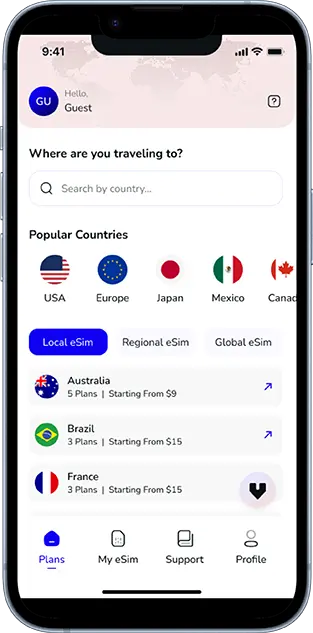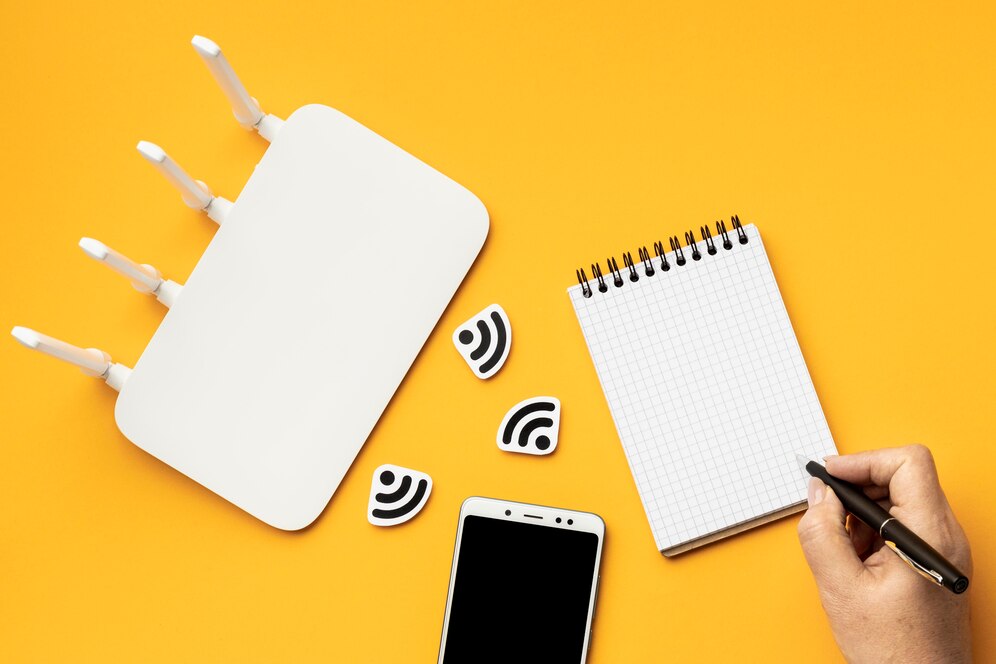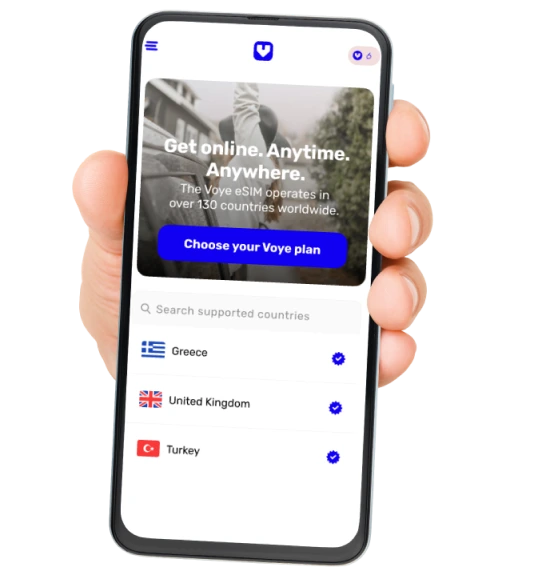Note that iPhone devices from Mainland China aren’t eSIM compatible. Also iPhone devices from Hong Kong and Macao aren’t compatible (except for iPhone 13 Mini, iPhone 12 Mini, iPhone SE 2020 and iPhone XS)
Staying connected when traveling abroad is no longer a luxury but a necessity. Whether you’re navigating new cities, uploading travel photos, or staying in touch with loved ones, reliable internet access is vital. The debate between eSIM vs Pocket WiFi often arises when travelers seek the most efficient and cost-effective solution. In this blog, we’ll explore the key differences, benefits, and drawbacks of each option, helping you decide which suits your travel needs best.
eSIM: The Digital Key to Effortless Connectivity
The Magic of Virtual SIM Cards
Gone are the days of juggling physical SIM cards. An eSIM (embedded SIM) is a virtual SIM card that provides a hassle-free way to stay connected without needing additional devices. Whether you’re traveling across continents or just hopping to another country, eSIM technology makes it incredibly simple. It eliminates the need for physical SIM cards and works entirely through a digital setup. With eSIM connectivity, all you need is a compatible device and an internet connection to download and activate an eSIM plan.
Why Choose eSIM? A Glimpse Into Its Convenience
The primary advantage of an eSIM is how quick and easy it is to activate. In just a few minutes, you can purchase, activate, and start using your eSIM WiFi. Most modern smartphones now come equipped with eSIM technology, meaning you don’t need to worry about compatibility with newer devices. It’s as simple as scanning a QR code, and within minutes, you’re connected to high-speed internet.
Moreover, eSIM allows for flexibility. If you’re visiting multiple countries, switching plans or adding new ones is incredibly easy. No physical hardware changes are needed, and there’s no risk of losing a SIM card. It’s a great solution for travelers seeking ease of use and flexibility.
The Pros and Cons of eSIM Connectivity
Pros:
- No extra device needed: Your phone is your only device—no need to carry a router or physical SIM cards.
- Instant activation: Receive a QR code via email, scan it, and connect within minutes.
- Cost-effective: eSIM plans are usually cheaper than renting or buying Pocket WiFi.
- Data sharing: You can still use your phone as a hotspot to share data with other devices.
Cons:
- Device compatibility: Not all phones are eSIM compatible, though most modern devices are.
- Limited sharing: While you can share your mobile data, it’s not always possible to support multiple heavy-data users at once.
Your Journey, Our eSIM
Stay online abroad with instant activation.
Pocket WiFi: The Portable Router with a Catch
Portable, Yet Bulky: What is Pocket WiFi?
If you’re unfamiliar with Pocket WiFi, it’s essentially a mini-router that uses mobile data to create a personal WiFi network. It’s like carrying your own internet hotspot. You can connect multiple devices—whether it’s your phone, laptop, or tablet—to this network, which is powered by a SIM card or even an eSIM.
While this sounds convenient, the reality of traveling with a Pocket WiFi is more cumbersome than it seems. You need to ensure the device is charged, it can be bulky to carry around, and there’s always the risk of losing it.
The Double-Edged Sword of Pocket WiFi
In comparing Pocket WiFi vs eSIM, it’s clear that Pocket WiFi does offer certain benefits. The most notable is that you can connect up to 10 devices simultaneously, making it an attractive option for groups traveling together. However, it’s not without its drawbacks.
Renting or purchasing a Pocket WiFi device comes with additional costs like shipping, insurance, and even security deposits. There’s also the limitation of battery life—Pocket WiFi devices usually last between 8-12 hours on a full charge, which means you’ll need to recharge them frequently, especially if you’re a heavy user.
The Pros and Cons of Pocket WiFi
Pros:
- Multiple devices: Great for connecting several devices simultaneously.
- Reliable connection: Can offer reliable internet in areas with strong cellular coverage.
- Device ownership: You can either rent or buy the device depending on your preference.
Cons:
- Extra costs: Renting or buying the device can be expensive, and you’ll often face extra fees like shipping or deposits.
- Limited battery life: Battery life can be an issue, especially on long travel days.
- Device maintenance: Carrying and ensuring the device is charged can become tedious.
The Battle of Convenience: eSIM vs Pocket WiFi
When weighing eSIM vs Pocket WiFi, the key difference comes down to simplicity and convenience. eSIM wins when it comes to ease of use and setup. With Pocket WiFi, you not only have to wait for delivery but also deal with returning the device if you’re renting. In contrast, activating an eSIM takes just minutes, without worrying about shipping, insurance, or device maintenance.
In terms of pricing, an eSIM WiFi plan is usually more budget-friendly than renting or buying a Pocket WiFi device. For example, with eSIM, you can easily get a short-term data plan for as low as $2 to $6 per day. Meanwhile, Pocket WiFi rentals can cost between $8 and $15 daily, depending on the country and provider. Plus, don’t forget the extra fees for shipping and insurance, which can significantly add up.
Flexibility and Connectivity: A Comparison of Features
Let’s break down some key features in the Pocket WiFi vs eSIM comparison:
- Cost: eSIM plans are generally cheaper and more flexible, while Pocket WiFi rentals tend to come with additional charges.
- Setup Time: eSIM offers instant activation, while Pocket WiFi may require days for delivery and setup.
- Data Sharing: Both options allow you to share data across devices, but Pocket WiFi offers better support for multiple connections at once.
- Portability: eSIM wins on portability since it’s entirely digital, while Pocket WiFi requires carrying an additional device.
Global Coverage, Local Rates
Experience hassle-free connectivity wherever you go.
eSIM vs Pocket WiFi: Which One is Right for You?
In the ultimate showdown of eSIM vs Pocket WiFi, it’s clear that both options have their place depending on your travel needs. If you’re looking for a lightweight, convenient solution that’s quick to set up, eSIM is the way to go. It’s cheaper, easier to manage, and doesn’t require you to lug around extra gadgets.
However, if you’re traveling in a group or need to connect several devices simultaneously, Pocket WiFi might make more sense despite the added costs and hassle.
Whether you opt for eSIM or Pocket WiFi, Voye Global offers excellent eSIM plans tailored to suit every traveler’s needs, providing seamless eSIM connectivity at competitive prices. Stay connected wherever your adventures take you with ease and affordability.
Seamless Mobile Data Everywhere
















